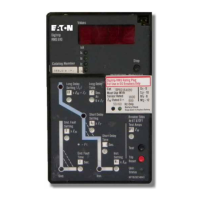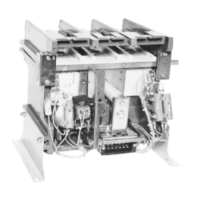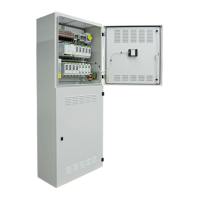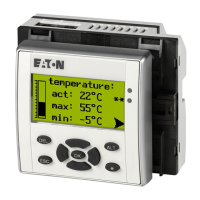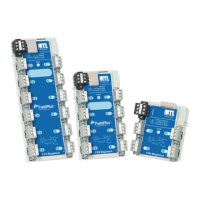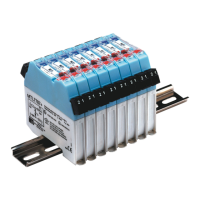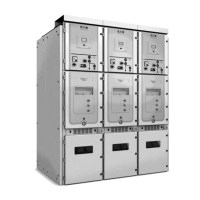Page
9
I
’*+
I
L
t
L
Time
Ms
Current
Fig. 12
-
3 Ground Fault Trip Current, and Ground Fault Trip
Time Adjustments and Curve Details
provided with the equipment.
A
written record of this test
shall be made and shall be available to the authority
having inspection jurisdiction.
6.2.2 Standards Requirements
As
a follow
-
up to the basic performance requirements
stipulated by the
N.E.C.
as stated above, UL Standard
No.
1053 requires that certain minimum instructions must
accompany each ground fault protection system. These
following statements plus a copy of the test record form
illustrated in Fig. 16 are shipped with each Digitrip
RMS
31
0
Trip Unit.
6.2.3 General Test Instructions
The interconnected system shall be evaluated in accor
-
dance with the equipment assembler’s detailed instruc
-
tions by qualified personnel.
The polarity of the neutral sensor connections (if used)
must agree with equipment assembler’s detailed instruc
-
tions to avoid improper operations following apparently
correct simulated test operations. Where a question
exists, consult the specifying engineer and/or equipment
assembler.
The grounding points of the system shall be verified to
determine that ground paths do not exist that would
bypass the sensors. The use of high
-
voltage testers and
resistance bridges may be used.
.-
i
+
300\(!&
8
Rating Plug Setting (Amperes)
2x-Ex
2x-8x 2x.8~ 2x-Ex
See
Fig.
2
-
7
and
Fig.
2-8
for
Continuation of Short Time
Instantaneous Portions of Curves
Current
Fig. 13 Optional Adjustable Ampere Setting Rating
Plug Used in
L
ES
Trip Unit
a
WARNING
THERE
IS
A HAZARD OF ELECTRICAL SHOCK
OR
BURN WHENEVER WORKING IN
OR
AROUND
ELECTRICAL EQUIPMENT. ALWAYSTURN OFF
POWER SUPPLYING BREAKER BEFORE
CONDUCTING TESTS.
Note: Since the Digitrip
RMS
31OTrip Units derive
their operating power from the phase currents, and
not from the neutral current, passing current through
the neutral sensor only will not properly test the
ground fault feature.
Using a low voltage (0
-
24 volt), high current,
AC
source,
apply a test current of 125% of the Digitrip
RMS
310
Ground
FaultTrip Unit pick
-
up setting through one phase
of the circuit breaker, as shown in Fig. 14
-
1 .This should
cause the breaker to trip in less than 1 second, and
if
an
alarm indicator is supplied, it should operate. Reset the
breaker and the alarm indicator. Repeat the test on the
other two phases.
Effective
March 2003
EAVN
I.L. 29C615E
Courtesy of NationalSwitchgear.com
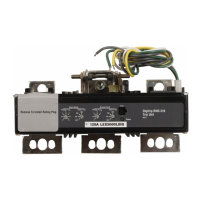
